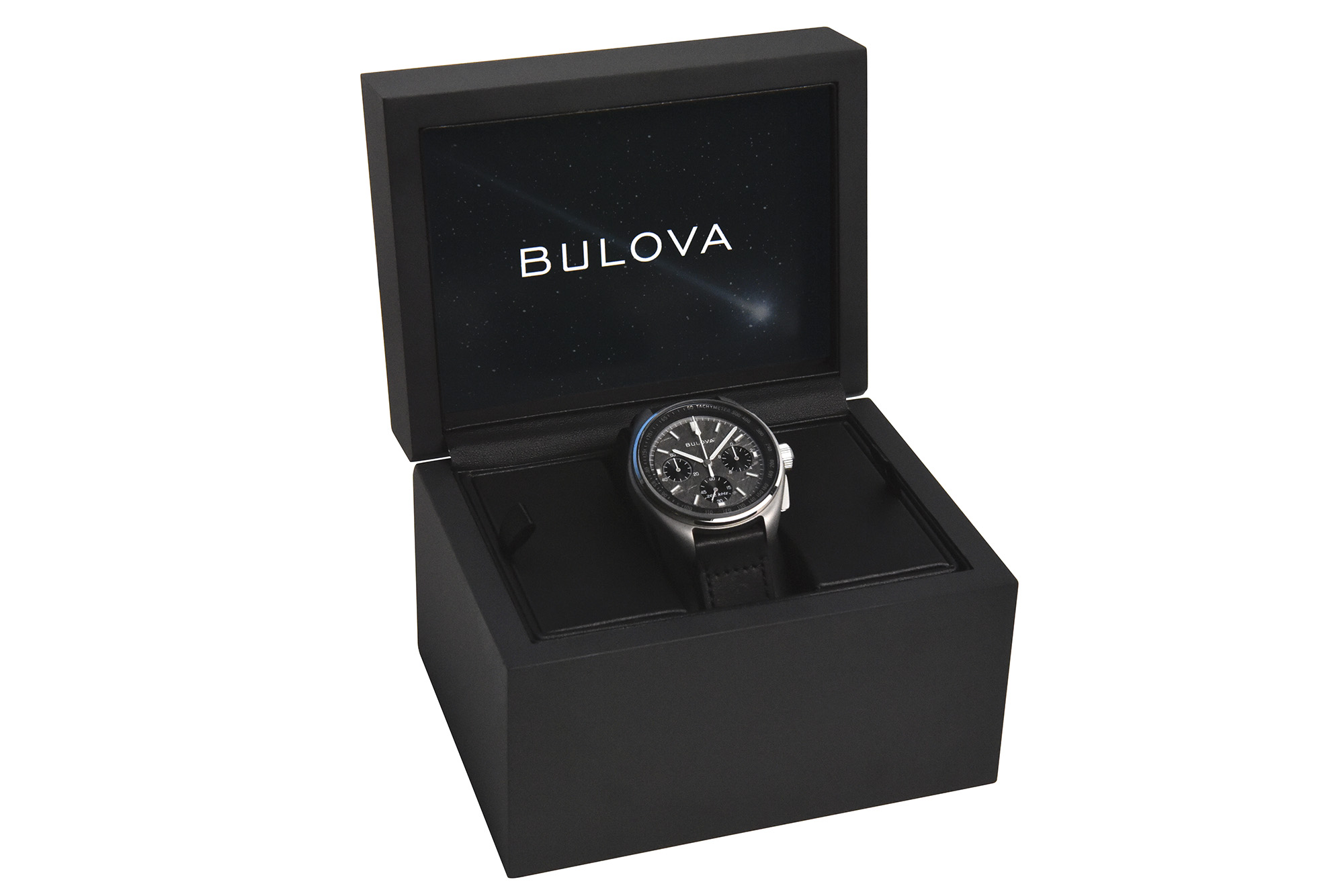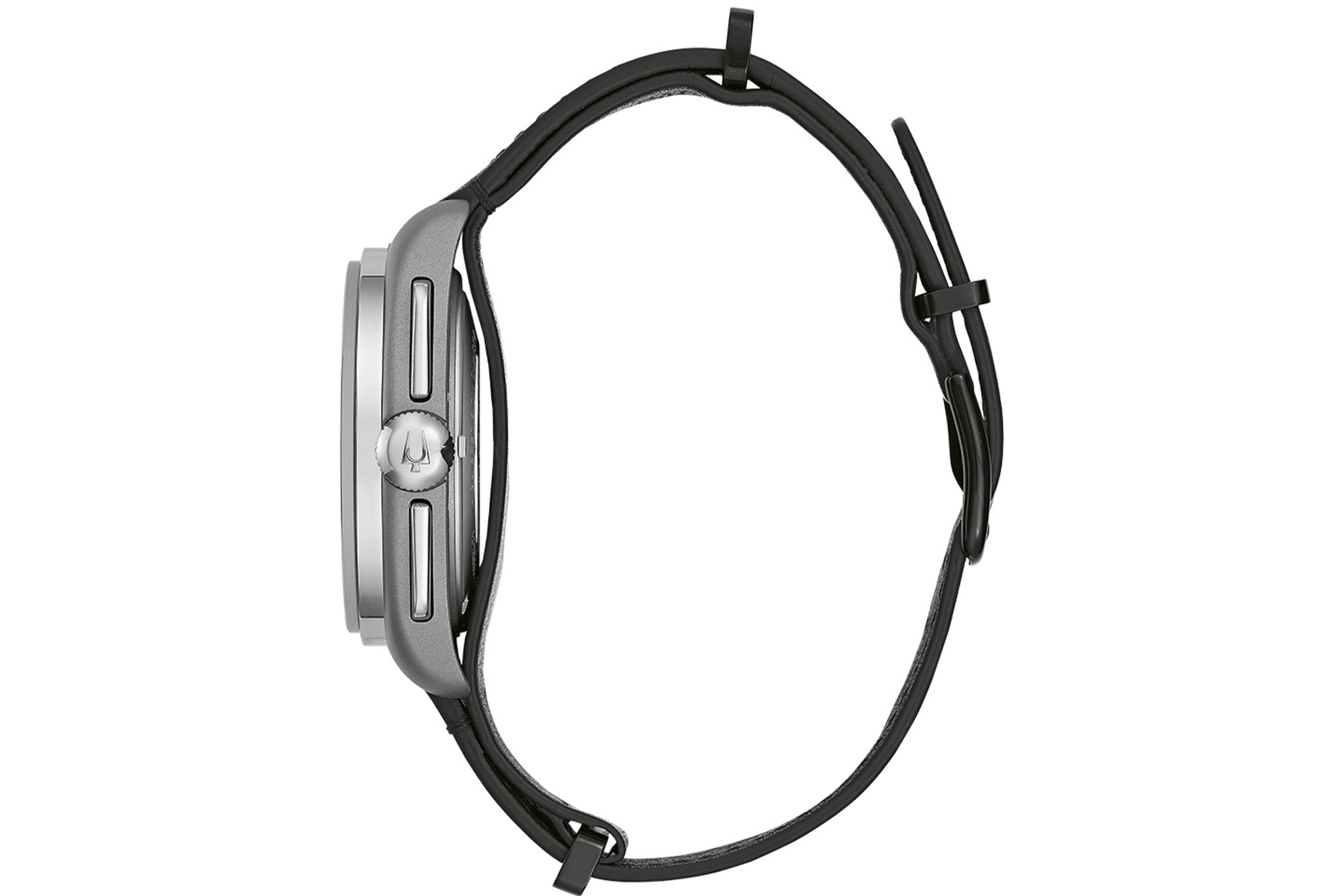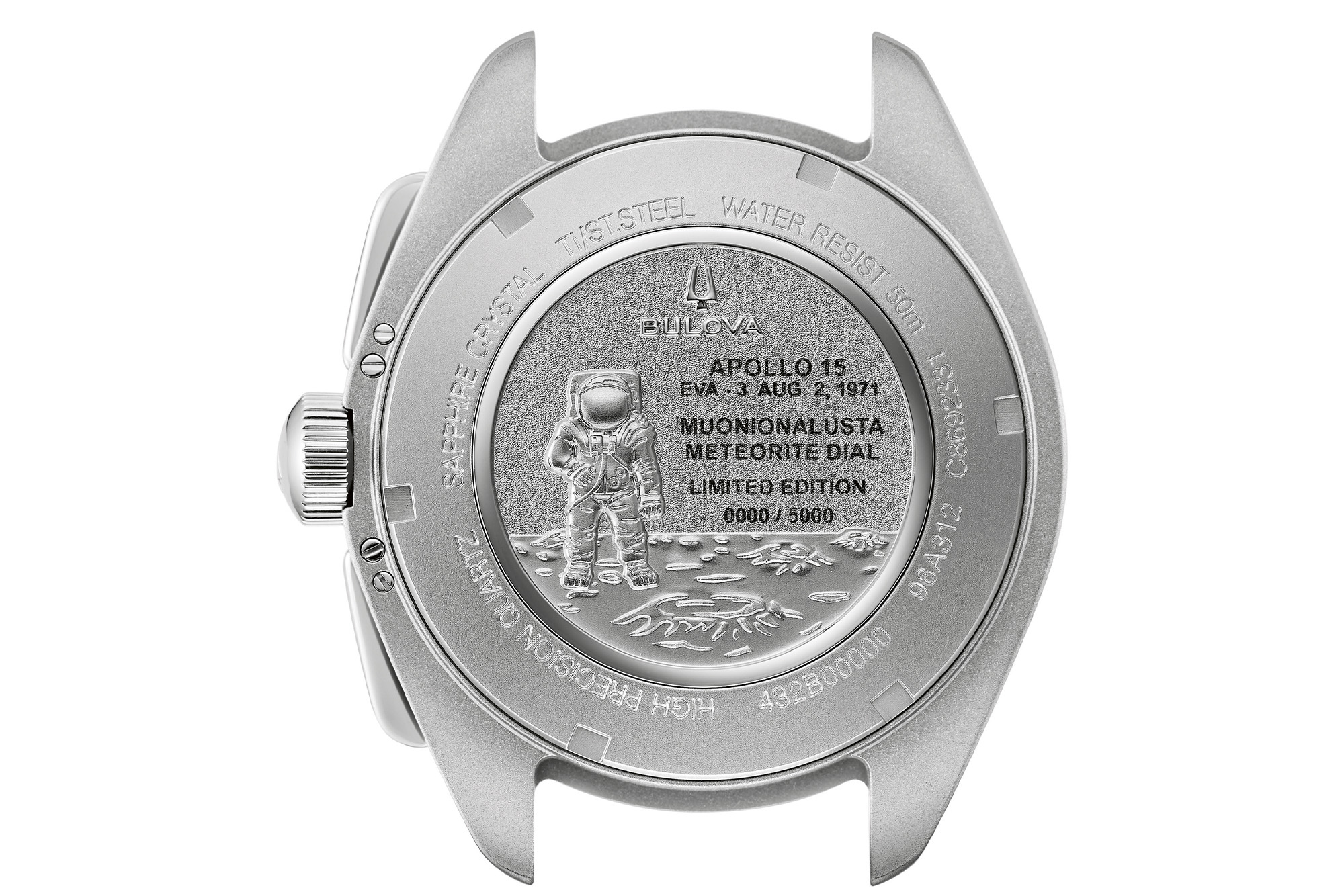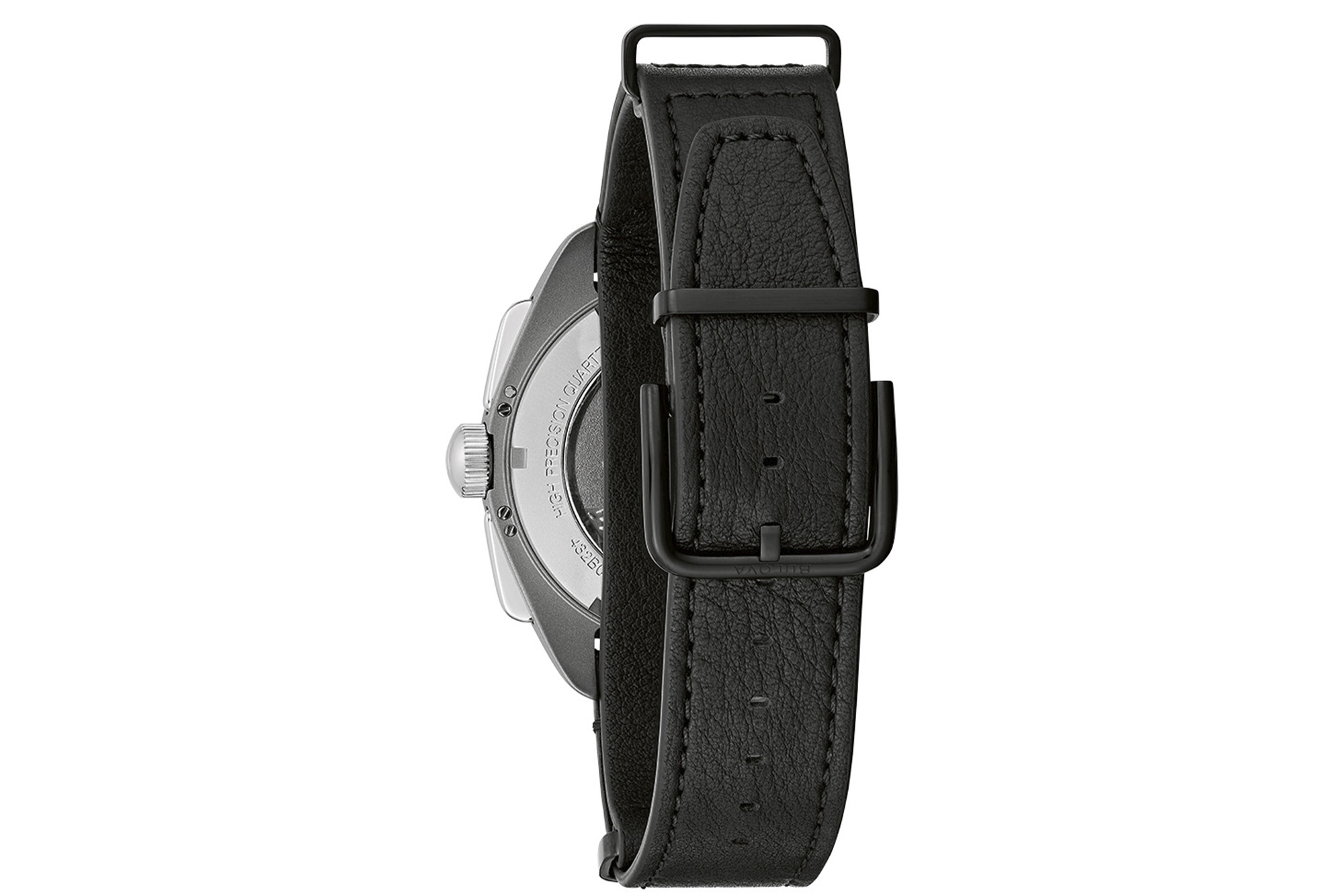The New Bulova Lunar Pilot Came From Outer Space
The watch pairs a meteorite dial with a legacy of spaceflight & exploration.
The post The New Bulova Lunar Pilot Came From Outer Space appeared first on Sharp Magazine.
Apollo 15, which touched down on July 30, 1971, was the ninth crewed mission in NASA’s pioneering Apollo program, and the fourth to successfully land on the moon. Its legacy includes being the first mission to explore the lunar surface in a newly developed, battery-powered rover, and the first to successfully retrieve a large chunk of the moon’s crust, a sample dubbed “The Genesis Rock,” for study.
But NASA Commander David Scott made a different type of history when, as he set out to explore the lunar surface, he did so wearing a Bulova Lunar Pilot chronograph. This connection to space exploration made the Lunar Pilot one of the most famous watches in the world, and helped the original prototype worn by Scott to sell for $1.625 million USD at auction in 2015. The new Bulova Archive Series Lunar Pilot Meteorite, however, elevates this already impressive legacy to a whole new level.
“Crafted specifically for astronomical conditions, the Lunar Pilot watch was used in space to track time, ensuring no one ran out of oxygen, water, or battery power in the portable life support–system backpack.”
Zahra Hemraj, director of marketing and data integration at Citizen Watch America.
Approximately one million years ago, a massive asteroid entered Earth’s atmosphere and smashed into an area in northern Scandinavia, close to the Sweden–Finland border. Composed of iron and nickel, and scattered over a vast area as it broke apart, the asteroid is believed to have been formed between four and five billion years ago — around the same time as our planet. Dubbed “Muonionalusta” (for the nearby Muonio River in Finland), it is thought to be the oldest meteorite to ever make impact with Earth, and offers a glimpse at the origins of the entire solar system. Pieces of the asteroid, with its distinctive geometric “Widmanstätten” pattern, can be found in the American Museum of Natural History, Germany’s Max Planck Institute, and — as of this year — inside each limited-edition Bulova Archive Series Lunar Pilot Meteorite.
This new watch is just the latest chapter in the long-running story of Bulova’s relationship with the U.S. space program. In 1958, the same year that NASA was formed, the U.S. Naval Research Laboratory approached the watchmaker and tasked it with creating timekeeping mechanisms for the Project Vanguard satellite program. With the help of General Omar Bradley, chair of the brand’s research and development between 1954 and ’58, and chair of Bulova as a whole from ’58 to ’74, the brand developed a range of timing mechanisms destined to become integral parts of dozens of future missions.
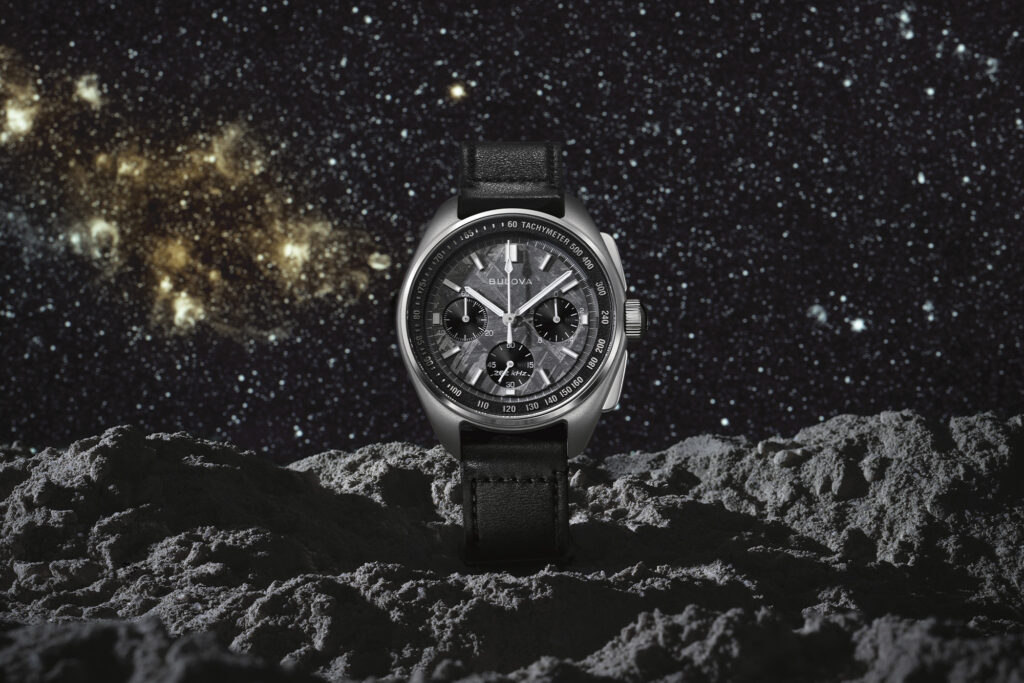
“Bulova was on 46 space missions and provided roughly 2,000 items to NASA,” explains Zahra Hemraj, the director of marketing and data integration at Citizen Watch America. “In addition to watches and clocks, Bulova provided other precision devices such as altimeters and a seismometer, which was placed on the Sea of Tranquility and remains there today.”
Much like the Accutron Astronaut, which was worn by test pilots who flew the experimental Lockheed A-12 reconnaissance aircraft, the Bulova Lunar Pilot prototype worn by Scott was designed to meet the unique demands of space flight. It featured large, curved pushers that were easier to operate whilst wearing thick gloves. And, on Aug. 2, 1971, when Scott became the seventh man to walk on the moon (and the first to drive the Lunar Roving Vehicle), he did so with a Bulova chronograph strapped to his wrist.
“Crafted specifically for astronomical conditions, the Lunar Pilot watch was used in space to track time,” says Hemraj, “ensuring no one ran out of oxygen, water, or battery power in the portable life support–system backpack. The timepiece could — and did — perform flawlessly, withstanding pressures of changing atmospheric conditions, fluctuating temperatures, and gravitational shifts.”
With the same case shape, tachymeter bezel, flat crystal, and pusher design as the original prototype, the new Bulova Archive Series Lunar Pilot Meteorite has been updated in several key ways, some more obvious than others. It shares the 43.5 mm case size of the original, but its construction has been upgraded, using sandblasted grade-5 titanium and stainless steel to give it a new, even sturdier edge. The HPQ NP20 movement is also new, with a three-pronged quartz crystal that vibrates at 262 kHz — eight times faster than standard quartz — and ensures the new Lunar Pilot remains accurate to within just a few seconds a year.
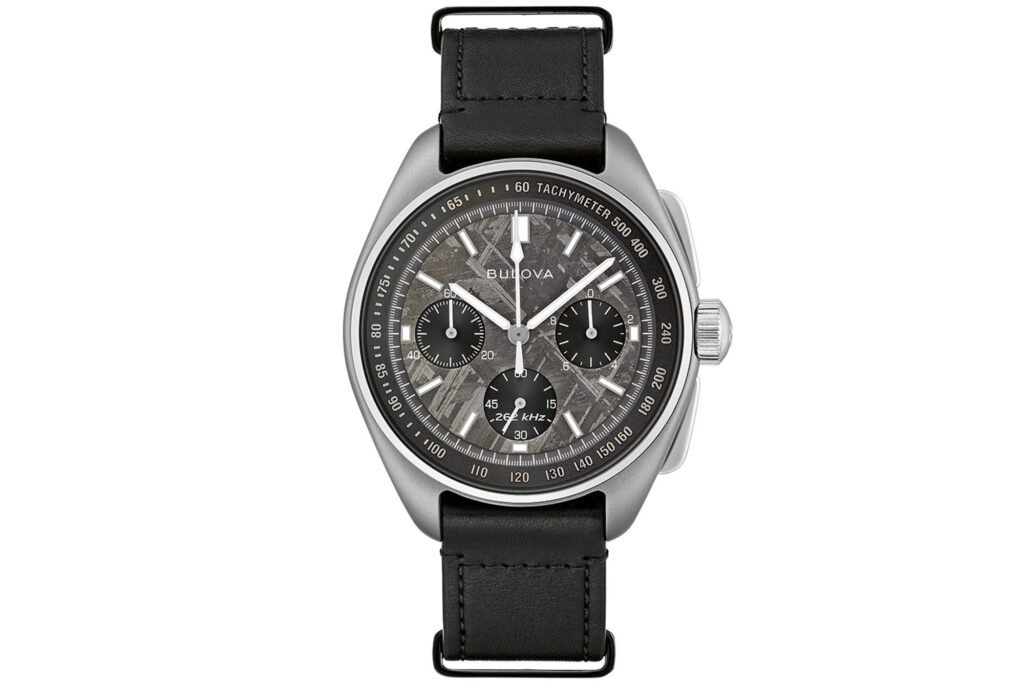
Then, of course, there’s the high-contrast dial, crafted from a polished disc of the Muonionalusta meteorite. It’s not as high-tech as titanium, and its rigidity and brittle nature make it extremely challenging to work with, especially in such thin pieces. As a result, to create each dial, the meteorite is firstly cut into a cylinder shape, then thinly sliced to produce a dial disc that’s polished and etched with acid to highlight the distinctive Widmanstätten pattern. These markings took millions of years to form, and can’t be replicated using human technology — and this renders each of the 5,000 limited-edition watches completely unique.
The Lunar Pilot Meteorite, then, is not only a tribute to Bulova’s legacy of space exploration, but also a meditation on the nature of time itself, with five billion years of space and time embedded in its incredible, inimitable dial.
The post The New Bulova Lunar Pilot Came From Outer Space appeared first on Sharp Magazine.

